Vote: Project of the Year 2025 | 1 MW to 10 MW

Here are the 1 MW to 10 MW nominees for the 2025 Solar Builder Project of the Year awards.
The form is at the bottom of the page. You are allowed to vote once per day from now until Friday, Oct. 10 at midnight (ET). (FYI: Our voting widget will let you vote more than once a day, but we filter these out in the back-end. Sorry, ballot stuffers.) Winners will be announced and prominently featured in the Q4 issue of Solar Builder magazine and online in December.
Thanks to Aurora Solar for sponsoring the 2025 Project of the Year Awards.
Be sure to vote in every category!
Acton Solar
Acton, Massachusetts | 7.1 MW PV + 4 MW storage
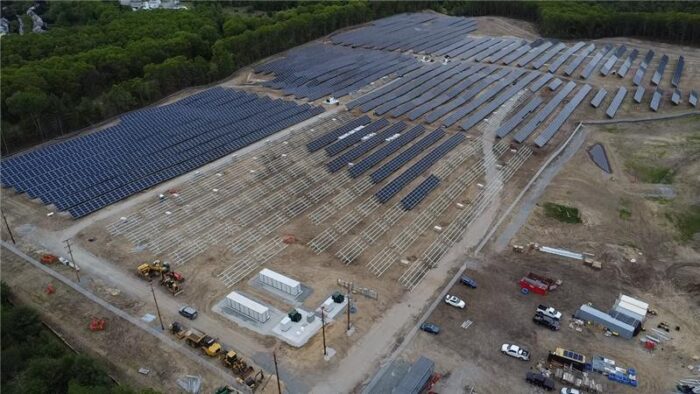
Formerly occupied by a chemical manufacturing facility, the Acton project site was designated an EPA Superfund site due to significantly contaminated soil, including asbestos. The Acton project repurposes a contaminated Superfund site for productive use, preserves farmland and open space, and created nearly 40 local jobs during construction. The project provides clean energy through a community solar model paired with battery storage, boosting local grid resilience. It also expands the town’s tax base through new revenue and supports Massachusetts’ SMART and Clean Peak Standard goals, since it reduces strain on the grid during peak seasonal demand times.
Constructing safely on the site required strict environmental and health safeguards. Crews trained in hazardous materials handling followed specialized health and safety protocols. Excavation was minimized, with electrical infrastructure designed primarily aboveground to avoid disturbing contaminated soils. The system was designed around existing structures, including old concrete slabs, to reduce site disturbance. Distributed Energy Infrastructure (DEI) coordinated with six regulatory agencies and established contingency plans to address any hazardous material discoveries. When asbestos was discovered, certified specialists were brought in to analyze, document, and remove all hazardous material under regulatory oversight.
Developer: Syncarpha | EPC/Installer: Distributed Energy Infrastructure | Modules: Canadian Solar | Inverters: Sungrow | Storage: Samsung, with integration services provided by STEM | Mounting/Racking: Terrasmart
Antioch for Youth & Family Food Bank
Fort Smith, Arkansas | 79.15 kW

In 2024, the Arkansas Climate League launched a transformative solar energy project to support low-income families and underserved neighborhoods in Fort Smith, Arkansas. With $360,000 in funding from the Community Energy Innovation Prize, awarded by the U.S. Department of Energy, the nonprofit installed solar energy systems at two key community centers: the Elizabeth McGill Drop-in Center and the Antioch for Youth & Family Food Bank. The project’s primary goal was to reduce energy costs and reinvest those savings into vital community programs. By helping community centers reduce their electricity costs through solar, the Arkansas Climate League enables local organizations to redirect those savings into essential programs, including:
- Utility bill assistance
- Distribution of weatherization kits
- Community garden revitalization
- Upgrades to food storage and refrigeration systems
The Elizabeth McGill Drop-in Center was completed in July 2024. The Antioch for Youth & Family Food Bank was next. Due to a flat roof with no built-in drainage system, the solar installation required a non-invasive, foam-based mounting system to preserve structural integrity. In 2026, the Antioch for Youth & Family Food Bank may add battery storage to its solar energy system.
Measured Results: Utility Bill Comparison:
- April 2024 (Before Solar) | Energy Used: 9,760 kWh | Energy Exported 0 kWh | Utility Bill: $834.44
- April 2025 (After Solar) | Energy Used: 6,960 kWh | Energy Exported 4,482 kWh | Utility Bill: $348.28 (Note: A $300 flat utility connection fee is included in this total).
Developer/EPC/Installer: Stitt Solar | Modules: Aptos | Inverters: SMA | Storage: N/A | Mounting/Racking: Solar Stack
Brewer Lake Road Solar
Orrington, Maine | 5.74 MW
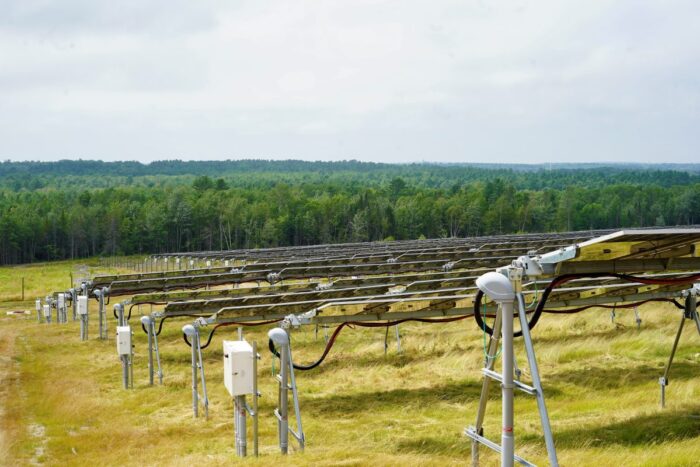
Brewer Lake Road Solar demonstrates how strategic engineering and cross-sector collaboration converts a challenging, unconventional site into a high-performing clean energy asset for the community of Orrington, ME. BlueWave partnered with the Town of Orrington as landowner, offtaker, and permitting authority. As a hilly, rocky, and uneven terrain within the flight path of Bangor International Airport, it presented significant constraints for conventional development. Proximity to a substation provided a strategic advantage, however, to enable cost-effective grid interconnection. To address the land, BlueWave deployed an all-terrain tracker to eliminate the need for extensive grading. Civil work included construction on a runoff basin equivalent in capacity to several Olympic-sized swimming pools and a half-mile access road with integrated drainage systems. At peak activity, 12 bulldozers operated at once to keep on schedule.
BlueWave is a mission-driven company, and environmental stewardship remained a central consideration. When a ground-nesting nighthawk was identified on site, BlueWave worked diligently with an environmental consultant to ensure best practices were followed. While not specifically listed as a threatened or endangered species in Maine under the state’s Endangered Species Act (MESA), the team took the steps to ensure the safety of the nighthawks, establishing a 50-meter exclusion zone and reorganizing construction activities until the nesting cycle concluded to ensure minimal disruption.
As an offtaker and landowner for the project, the Town is projected to realize substantial energy cost savings for government buildings over twenty years while earning stable, recurring ground lease revenue. Estimated energy cost savings are greater than $500,000 while ground lease revenue will exceed $1.5 million.
Developer/EPC/Installer: BlueWave | Modules: ZNShine Solar| Inverters: Solectria | Storage: N/A | Mounting/Racking: Nevados, APA Solar
Chinle Unified School District
Chinle, Arizona | 2.918 MW
Veregy partnered with Chinle Unified School District (USD) to implement a transformative energy savings project in one of the most underserved communities in the United States. This initiative represents the largest tribal guaranteed energy-savings project in Arizona history, a milestone made even more significant given that Chinle High School serves the largest Native American student population of any high school in the state. The project introduces a wide range of decarbonization, energy efficiency, and operational improvements, including energy-efficient lighting, real-time monitoring of HVAC systems, advanced building control systems, water conservation measures, and solar arrays.
By retrofitting school campuses with efficient systems, energy costs were significantly reduced while students and residents gained new learning opportunities around conservation and sustainability. The initiative has already inspired further community-led projects and highlighted how sustainable solutions can empower local populations. A cornerstone of this effort has been the installation of solar systems across 11 school sites. To maximize community benefit, Navajo Nation workers were hired to assist with installations, creating valuable jobs and supporting the local economy. The solar installation is projected to offset 60% of the district’s grid electricity consumption.
Additionally, navigating the regulatory framework of the Navajo Nation added complexity, as its tax policies, labor requirements, and federal funding guidelines demanded specialized expertise. Despite these hurdles, Veregy’s experience and dedication ensured the project’s success. With a total investment of $33.8 million, including nearly $10 million in Inflation Reduction Act funding for solar energy, Chinle USD expects to save an estimated $73 million over the project’s lifetime.
Developer/EPC/Installer: Veregy LLC | Modules: Jinko Solar | Inverters: Chint Power Systems | Mounting/Racking: Castle Steel Inc. (fabricator)
Christiana Solar Farm
Christiana, Tennessee | 4.5 MWdc
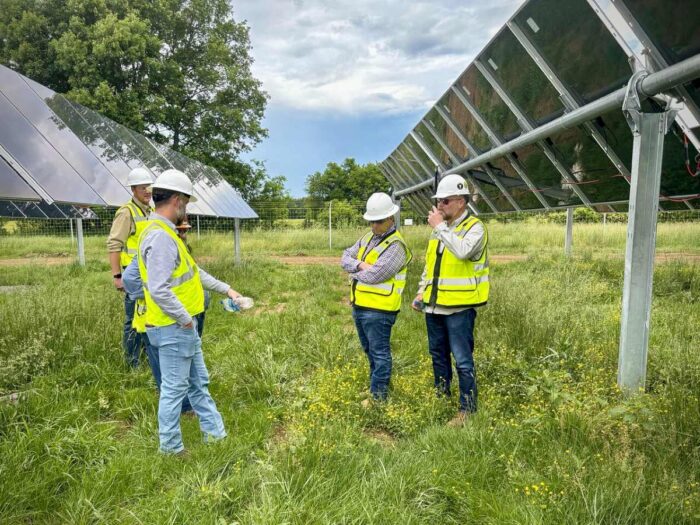
As Silicon Ranch has pioneered the integration of solar and sheep grazing, we’ve often been asked by our neighbors in the communities where we operate why we don’t do the same with cattle. The answer is that it’s difficult to co-locate cattle and solar in a way that is not only cost-effective but is also, and more importantly, good for the land, good for the animals, and good for solar energy production.
But the question stayed with us. Never ones to back down from a challenge, our team set to work — and this year, Silicon Ranch built the first ever U.S. solar power plant that will sell energy wholesale while also providing a home for a resident herd of grazing cattle. At Silicon Ranch’s Christiana Solar Project (Christiana), cattle ranchers, inventors, researchers, and stakeholders from across the energy, agriculture, and academia sectors are working together to take on a new frontier in American farming.
Christiana, which will have cattle introduced in 2026 and be managed through our double-patented CattleTracker rotational grazing system, will help Middle Tennessee Electric — the largest electric cooperative in the TVA region and the second largest in the country — meet the energy needs of more than 750,000 Tennesseans. The project also serves as a living laboratory where researchers from Colorado State University can study cattle behavior, welfare, and ecological impacts.
Installation challenges included finding the right panel height, fencing integration, and tracker logic to support adaptive grazing rotations. By strategically tilting the panels, our project developers and researchers can minimize the amount of steel beneath each panel, allowing cattle to graze each paddock, followed by rest periods for vegetation recovery. By subdividing the pasture beneath the solar array into paddocks and using tracker-controlled grazing modes, Christiana creates a safe space for cattle without requiring cost-prohibitive structural modifications. This regenerative approach minimizes energy loss while maximizing land use. By optimizing both cattle grazing and solar energy production, the project supports soil health, biodiversity, and long-term ecosystem resilience, and contributes to the local food system.
Christiana is more than a solar farm — it’s a model for a farm-friendly energy future that honors tradition while driving innovation. With plans for a Solar Community Education and Engagement Center, the project is poised to inspire the next generation of energy leaders and land stewards.
Developer: Silicon Ranch | EPC/Installer: Pure Power Contractors | Modules: First Solar | Inverters: SMA America | Mounting/Racking: Nextracker
Department of Energy Rooftop Solar
Washington, D.C. | 2.2 MW
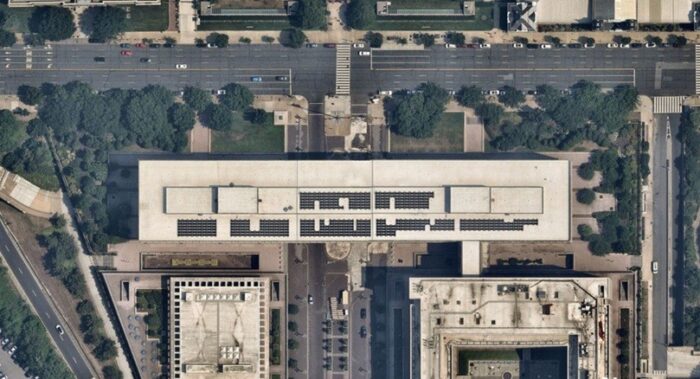
The rooftop solar array at the U.S. Department of Energy’s headquarters building in Washington, D.C., is a beacon of clean energy leadership in action. The Washington, D.C., temperamental climate introduced some serious installation challenges, including fluctuating temperatures, snow loads, and high winds. All of these factors necessitated a racking system that would offer stability and durability without any trade-off with efficiency or regulatory. Aside from technical proficiency, the system demonstrates an overall dedication to sustainability and local production. The Sollega FR510-6dg racks are 100% U.S.-made, utilizing Texas-based polymer, Los Angeles-injection-molded, and Ohio-fabricated fasteners. When its life cycle is complete, the system is completely recyclable, reducing waste and environmental degradation. This installation not only helps the DOE achieve its clean energy and greenhouse gas reduction goals — it also provides a blueprint for government agencies and private entrepreneurs to work together towards national sustainability.
Developer/EPC/Installer: Prospect Solar | Modules: Silfab Solar | Inverters: Yaskawa Solectria | Mounting/Racking: Sollega
East Bay Municipal Utility District – Orinda
Orinda, California | 4.6 MW
The Orinda Photovoltaic Solar Energy Project, a 4.6-MW solar array developed for the East Bay Municipal Utility District (EBMUD), is an example of how creative financing and innovative design can deliver both significant financial savings and accelerate critical environmental goals for a vital public service.
Designed, built, and operated by TotalEnergies, the 12-acre facility is one of the largest solar installations in California’s San Francisco Bay Area supporting EBMUD’s mission to provide high-quality drinking water and wastewater services to 1.4 million customers while preserving the resilience of its water supply and watersheds. The array contains more than 12,000 high-efficiency panels mounted on single-axis trackers engineered to withstand winds up to 120 mph, and is strategically located across from a Pacific Gas & Electric (PG&E) substation, reducing potential interconnection impacts.
Under a long-term PPA, TotalEnergies provides EBMUD with fixed-price power. The system’s unique application of PG&E’s Renewable Energy Self-Generation Bill Credit Transfer (RES-BCT) Program allows the electricity generated to offset consumption across up to 50 of EBMUD’s electrical accounts. This offsets approximately 10% of the utility’s total energy costs.
When the project’s size raised initial concerns about its impact on the natural beauty of the area, EBMUD and TotalEnergies responded with a community-focused design. They implemented vegetative screening and thoughtful landscaping to seamlessly integrate the array into its environment, minimizing visibility from nearby roads and trails.
Developer/EPC/Installer: TotalEnergies | Modules: SunPower | Inverters: Power Electronics | Storage: N/A | Mounting/Racking: Nextracker
Nava Storage
Royalton, Vermont | 4.9 MW

Nava Storage is a 4.9 MW / 19.8 MWh battery energy storage system in Royalton, Vermont. Located next to Encore owned-and-operated Nava Solar, Nava Storage will provide energy storage services to Green Mountain Power (GMP), which will reduce their exposure to peak demand events within the regional system for the duration of the system’s 20-year lifespan. While Nava Storage’s proximity to Nava Solar will ultimately maximize the value of the battery, construction on this sloped, 1-acre parcel proved a unique challenge. The project developers had to build a retaining wall for the project to create the flat area necessary for the batteries.
Nava Storage also offers community benefits through Encore’s community impact donation program. This project is accompanied by a $20,000 donation to Vermont Works for Women (VWW), a statewide organization that works to make technical careers more accessible to women and marginalized genders. VWW has been hit heavily by recent grant cancellations at the federal level and is experiencing a funding gap for their technical career days (which are sometimes held at Vermont Technical College, just 15 minutes from Nava Storage). Encore’s donation will fund two Career Challenge days to host middle school girls and gender-expansive youth for a judgement-free, fun-filled day to explore their local tech center.
Developer: Encore Renewable Energy | EPC/Installer: KORE Power | Modules: N/A | Inverters: N/A | Storage: KORE Power | Mounting/Racking: N/A
Orange County Convention Center
Orlando, Florida | 2.3 MW

The Orange County Convention Center (OCCC) is a vital hub for the Orange County, Florida, community — one of the largest convention centers in North America. In early planning, it became clear the North-South Building, with more than 1.37 million square feet of roof area, required a full roof system replacement to maintain weather-tight integrity and long-term performance.
The project began with the complete removal of the existing single-ply roofing membrane and associated components down to the deck. Crews implemented staged tear-off procedures, working in manageable sections to maintain watertight integrity at all times. Challenges included operational constraints, with back-to-back conventions year-round, which prohibited daytime roofing activities during major events. Height and access also posed difficulties, with multiple roof elevations ranging from 80 to 100 feet. The project team had to coordinate roofing, solar, HVAC, plumbing, and safety system upgrades simultaneously, while also ensuring OSHA compliance for all trades in a high-traffic public facility.
And yet, the project was completed ahead of schedule. From the deck up, the installation included:
- Substrate Preparation: Inspection and repair of any deck irregularities.
- Thermal Insulation: Installation of 2-in. Johns Manville ISO insulation boards, mechanically attached to the deck for securement and thermal performance.
- Cover Board: Installation of ½-in. Johns Manville DEXcell cover board to provide dimensional stability, fire resistance, and enhanced wind uplift performance.
- Membrane System: Application of an 80 mil Johns Manville PVC RhinoBond fastened system. This induction-welded attachment method reduced membrane penetration, improved wind uplift resistance, and expedited installation over large areas.
- Flashing & Edge Metal: Precision installation of all flashing details, parapet caps, and edge metal in compliance with ES-1 standards.
- Roof Drainage Upgrades: Replacement of over 300 roof drains and installation of new overflow scuppers to improve stormwater management.
Once the roof membrane was complete, crews installed a 2.3 MWdc rooftop solar array. A custom
combiner box configuration was engineered to allow efficient dc transmission across 700-800
ft spans, minimizing voltage drop and optimizing energy performance. The system powers the
OCCC’s HVAC, concourse lighting, and critical infrastructure 24/7.
In partnership with IDEAS For Us, 5,800 decommissioned solar panels from a prior installation were redistributed to 120+ Florida households and nonprofits through “The Great Solar Giveaway,” avoiding thousands of pounds of e-waste.
Developer/EPC/Installer: Advanced Green Technologies | Modules: Hanwha Qcells | Inverters: SolarEdge | Mounting/Racking: IronRidge
Willcox Greenhouse
Willcox, Arizona | 4 MW
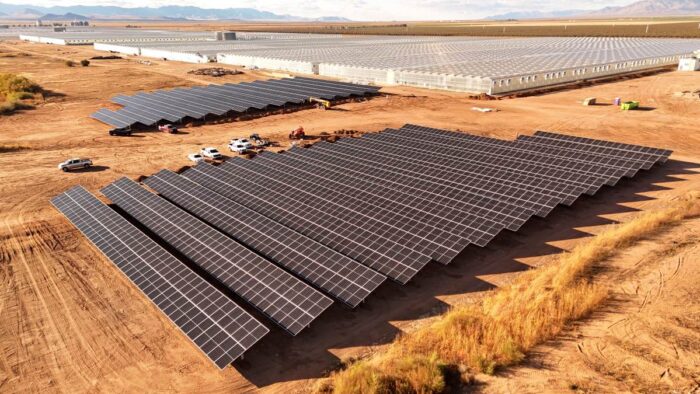
This 4 MW project was built to power a large commercial greenhouse operation in Willcox, Arizona. Spanning three separate sites and five utility interconnections, it advanced from contract signing to permission to operate in under 90 days. Delivering that scale on such a timeline required exceptional coordination and communication between the owner, developer, local utility (SSVEC), AHJ (Graham County), general contractor, engineering teams, and subcontractors. The project faced several unexpected challenges. Late in development, design changes were required to accommodate future battery storage and to resolve questions of transformer ownership.
During construction, site walks revealed major obstacles in areas already designed for solar arrays. At Site 1, a trash pit filled with broken glass from past greenhouse operations was discovered under part of the planned northern array. This required a rapid redesign to ensure safety and maintain construction integrity. At Site 2, crews uncovered buried netting and unexpected drainage issues near a water channel, which made heavy grading equipment unusable. Within days, the team redesigned layouts, shifted trenching routes, and adapted to the new terrain.
A key partner, OMCO Solar, operates a large manufacturing plant in Arizona and manufactured the ground mounts for the solar arrays of this project. This became the largest project they had ever worked on in the state. The Wilcox Greenhouse project is also revitalizing a rural community. The solar installation enabled the owner, a farmer with greenhouse operations in Canada and California, to reopen a dormant agricultural facility in Willcox, Arizona. Once employing 1,000 people, the greenhouses had been shuttered since 2020 due to the combined impacts of COVID-19 and tomato blight. With the financial stability and cost savings provided by solar, the facility reopened, bringing 500–600 jobs back to the community. The greenhouses now produce tomatoes and cucumbers for regional restaurants and markets, sparking renewed economic activity and strengthening the local food supply.
Developer: EnPower Star | EPC: Obodo Energy Partners | Installer: Obodo, Icon Electric, Sunstall, and Rubicon | Modules: Canadian Solar | Inverters: CPS | Storage: N/A | Mounting/Racking: OMCO Solar





Comments are closed here.